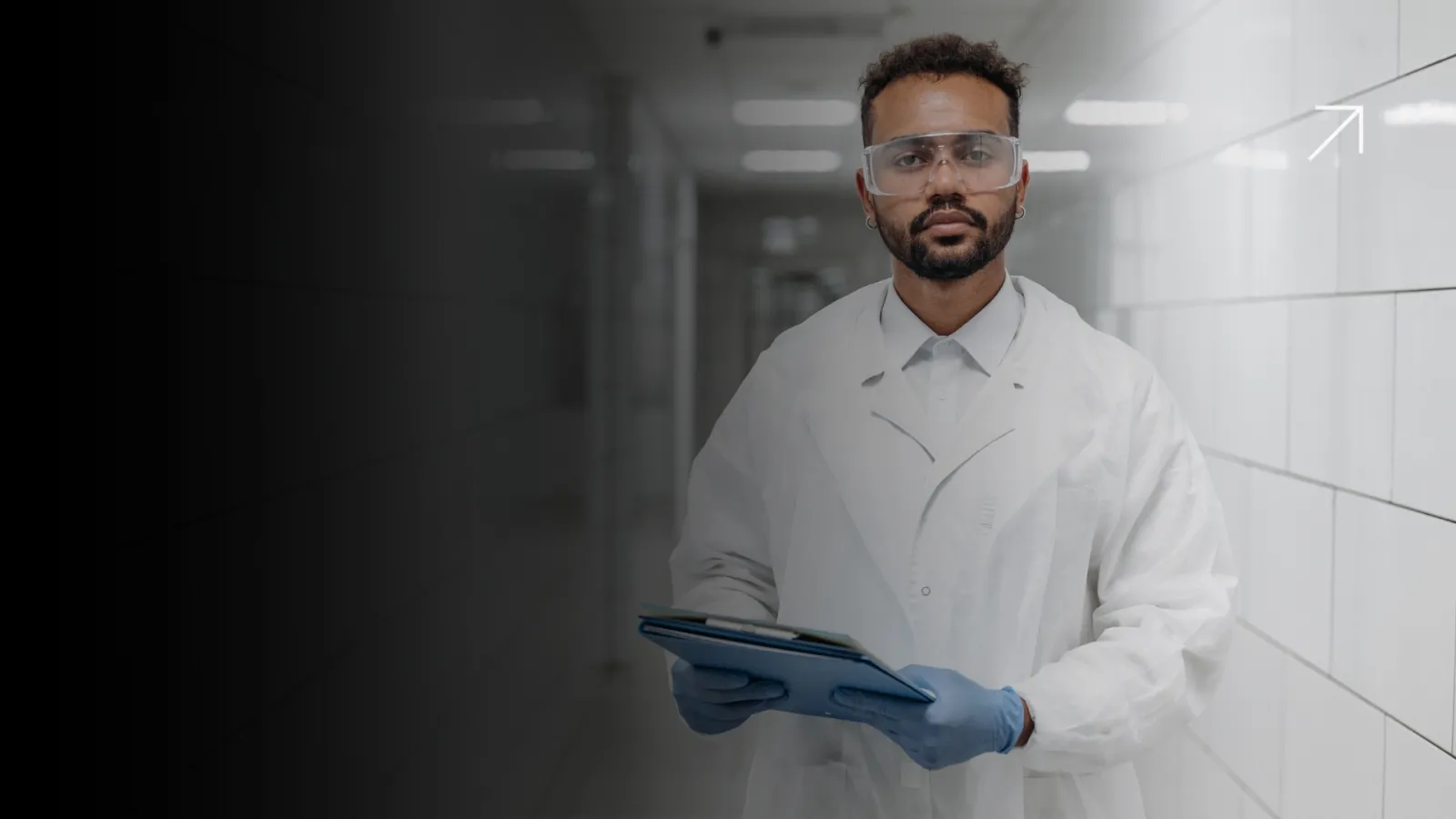Pharma marketing isn’t about pushing messages anymore. It’s about designing HCP pharma journeys doctors actually want to be part of, and technology is finally making that possible.
Why “Doctor First” Isn’t a Slogan, It’s a Strategy
For years, Indian pharma has chased omnichannel marketing as if channels were the answer. Email campaigns, webinars, WhatsApp updates- each rolled out with enthusiasm, few sustained with purpose. But here’s the truth: hcp pharma success isn’t about channels. It’s about doctors.
Doctors don’t think in campaigns. They think in patient outcomes, trust, and credible information. Yet pharma brands often design engagement journeys backward, starting with the medium instead of the mindset. The shift now underway is simple but powerful: doctor first, channel second.
This isn’t about new buzzwords; it’s about aligning with how healthcare professionals actually live, learn, and decide. When engagement begins with understanding their world, not just their specialty, everything else clicks into place.
India’s HCP Pharma Reality: Crowded, Connected, and Cautious
In India, the healthcare professional landscape is unlike anywhere else. Over 1.3 million registered doctors serve a population of 1.4 billion. The average physician meets dozens of patients daily, manages limited time for scientific updates, and faces mounting regulatory scrutiny on interactions with pharma.
This means that HCP Pharma engagement must walk a tightrope: meaningful, compliant, and efficient. The pandemic accelerated digital adoption, virtual conferences, e-detailing, and telemedicine, but the fatigue soon followed. Now, most doctors blend digital and in-person learning. They expect convenience without compromise, clarity without clutter.
Sun Pharma’s 2024 “Doctor Connect” initiative demonstrated this shift. Instead of spamming doctors with emailers, they built micro-communities on regional-language apps where specialists could access short, data-rich updates at their own pace. Engagement rose 3x, not because of the platform, but because the content respected the doctor’s time.
The lesson: channels don’t create engagement; context does.
The Flaw in Channel-Led Marketing
Most pharma marketing teams still define success by output- emails sent, events hosted, digital touchpoints delivered. But HCP engagement isn’t linear. A cardiologist might attend a webinar once, then ignore emails for months, only to respond to a field rep’s WhatsApp reminder about the same topic.
Channel-first thinking creates fragmentation. Doctor-first thinking creates continuity.
The best pharma marketing to doctors uses analytics to map real behaviors, not assumed funnels. For example, an oncologist reading clinical updates late at night on mobile might value concise, evidence-based summaries, while a general physician prefers visual explainers shared by reps during visits.
When brands design omnichannel systems around these behavioral insights, they move from broadcasting to relationship building.
Turning Data Into Empathy
Data alone won’t humanize doctor engagement. But when interpreted correctly, it reveals intent.
Every CRM log, content click, and rep visit builds a picture of what an HCP values. The job of HCP Pharma analytics isn’t just counting interactions- it’s connecting them.
Take Dr. Reddy’s Laboratories. By layering CRM data with learning management analytics, they discovered that doctors who engaged with case-based e-learning modules were 60% more receptive to product updates later. That insight changed their outreach rhythm. Instead of pushing promotions first, they led with education.
That’s the essence of doctor-first design: use analytics to anticipate need, not just track activity.
Compliance: The Unseen Enabler
In India, compliance isn’t an afterthought- it’s the framework that makes marketing credible.
The updated UCPMP guidelines have reshaped pharma communication. Every piece of content sent to doctors must be approved, traceable, and free from inducement. In this world, HCP engagement in pharma needs systems where compliance isn’t a bottleneck but a built-in safeguard.
Cipla’s compliance automation model is a standout. Their HCP portal integrates medical, legal, and regulatory approvals directly into campaign workflows. Instead of waiting weeks, content moves through rule-based review, ensuring speed without shortcuts. The result? 100% audit-ready outreach, delivered in half the time.
When compliance sits inside your engagement design, it builds trust. Doctors notice consistency. Regulators notice discipline. And marketing teams get to move fast without crossing lines.
Designing the Indian HCP Journey
A doctor’s professional journey is multi-layered. Awareness, curiosity, validation, and action—each step influenced by different triggers. Mapping this journey is where hcp pharma strategies often fail, not because of bad intent, but because of poor empathy.
Indian HCP journeys must account for:
- Regional diversity (doctors in Tier 2 and Tier 3 cities have very different digital behaviors).
- Specialty-driven information needs.
- Language preference.
- Device accessibility.
- Regulatory sensitivity around content.
When Dr. Reddy’s rolled out its multi-channel HCP program, it didn’t start with tools; it started with ethnographic research. They spent months understanding how doctors consumed content across cities. The result? Modular experiences- bite-sized, mobile-first, and locally contextual.
Omnichannel success followed naturally because it was designed around doctors, not technology.
Technology as the Bridge
Let’s be clear, technology is not the hero; it’s the enabler.
Modern pharma engagement relies on CRM, CMS, and analytics platforms, but the point isn’t automation for its own sake. The point is orchestration.
Veeva, Salesforce, and custom Indian-built platforms are being reshaped to serve doctor-first experiences. Integration is the keyword: when a rep updates an interaction, the CRM feeds it to analytics, which personalizes the next campaign from the CMS. That’s what pharma marketing to doctors looks like when it’s intelligent.
Sun Pharma’s endocrinology team built a unified doctor engagement dashboard last year- tracking every touchpoint from webinars to WhatsApp interactions. They used AI to flag over-contacted doctors and adjust frequency automatically. Engagement steadied, and opt-outs fell by 25%.
That’s data-led empathy at work- technology making marketing more human, not mechanical.
Personalization at Scale
Doctors are inundated with content. The only way to cut through is personalization, not by name, but by relevance.
A generic “Dear Doctor” email doesn’t build credibility. A targeted clinical case update, aligned with their recent CME topic or therapy interest, does.
The best HCP pharma strategies rely on dynamic segmentation. Real-time analytics identify behavioral shifts, say, a cardiologist suddenly accessing diabetes-related content. The system adapts, offering cross-therapy insights or new product literature automatically.
Cipla used this model for its respiratory division. Doctors interacting more with patient education videos received follow-up invites for live demo sessions, while low-engagement profiles were nudged via shorter text updates. Conversion jumped 40% in the next quarter.
That’s personalization meeting purpose.
Measuring What Matters
Metrics define culture. For too long, Indian pharma has measured engagement by activity- emails sent, meetings logged, click rates achieved. Doctor-first marketing flips that.
Meaningful metrics ask:
- Did the doctor find this content useful?
- Did engagement influence clinical adoption?
- Did it strengthen trust?
New-age HCP engagement in pharma systems use sentiment analysis, dwell time, and interaction quality as performance benchmarks. They measure impact, not output.
Dr. Reddy’s recently tied its digital engagement metrics to prescription lift in selected geographies. For the first time, marketing could correlate doctor education programs with tangible outcomes. It wasn’t just data; it was proof that tech-led empathy works.
The Compliance-Tech Equation
Indian pharma can’t talk about HCP engagement without mentioning compliance one more time because it’s the thin line between leadership and liability.
The smartest playbooks today don’t avoid compliance; they design around it. They use technology to make regulatory alignment effortless embedding disclaimers, automating MLR trails, and integrating audit-ready logs.
Veeva’s Indian clients have been adapting its approval engine to handle multilingual workflows. Salesforce users are integrating consent tracking to ensure doctors opt-in to specific therapy communications. These moves transform compliance from paperwork into a competitive advantage.
Doctors trust brands that play by the rules, and consistency, not charisma, is what wins long-term loyalty.
The Human Element
Technology drives efficiency. People drive trust.
At the heart of every successful HCP engagement strategy is still the medical rep. But their role has evolved- from messenger to orchestrator. Reps now need to interpret CRM insights, personalize outreach, and bring digital and physical interactions together seamlessly.
Mankind Pharma’s hybrid rep model is a good example. Each rep uses CRM data before every visit to review past content interactions, then tailors discussions accordingly. Afterward, analytics track feedback loops in real time. The rep remains essential, but now empowered by data.
That’s the new doctor-first model- tech-enhanced humanity.
From Engagement to Experience
True transformation isn’t about adding channels; it’s about creating consistent experiences across them. When doctors move from a webinar to an app to a rep meeting and see the same quality, tone, and credibility, that’s when omnichannel becomes meaningful.
This is where Indian pharma is headed towards unified, analytics-led, compliant ecosystems designed around doctors’ journeys, not marketing calendars.
The companies already ahead, Sun, Cipla, Dr. Reddy’s, aren’t louder; they’re smarter. They’ve stopped selling products and started curating experiences.
The Road Ahead
By 2026, more than 70% of Indian doctors are expected to use at least one digital learning or communication platform weekly. This is both a challenge and an opportunity.
The challenge: rising noise and compliance complexity.
The opportunity: designing systems that serve genuine doctor needs through HCP Pharma innovation, integrating AI-driven analytics, voice-based updates, and hyperlocal medical education.
The winners won’t be those with the most campaigns. There’ll be those who understand this: the doctor journey isn’t something you control; it’s something you earn.
Final Word
Doctor-first, channel-second isn’t philosophy; it’s execution. It means every campaign, CRM rule, and content workflow starts with empathy and ends with compliance.
Indian pharma doesn’t need more marketing. It needs meaning, delivered through technology that understands its doctors better than anyone else.
The companies that master that balance will redefine not just engagement but credibility itself.





